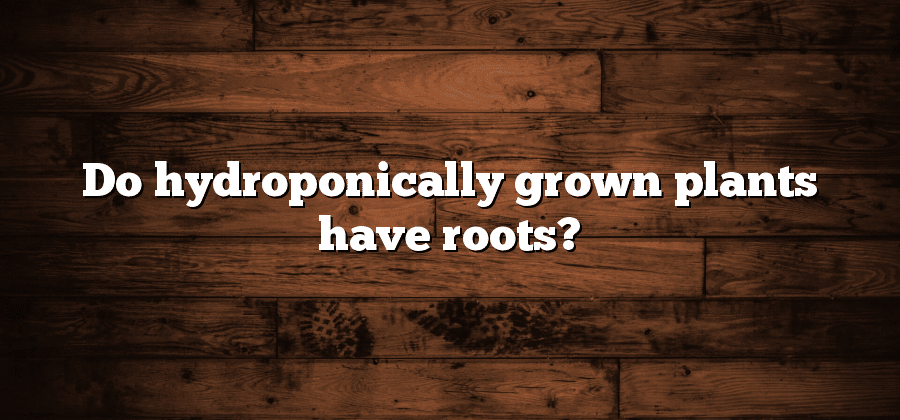Do hydroponically grown plants have root systems?
Hydroponically grown plants may not develop the traditional extensive root systems seen in soil-grown plants, but they do have a different type of root system. In hydroponics, roots tend to be smaller and more delicate compared to their soil-grown counterparts.
The primary function of roots in hydroponics is to absorb water and nutrients from the nutrient solution. Since hydroponics is a soilless growing method, plants rely on the nutrient solution delivered directly to their root systems. These specialized root systems are designed to maximize the absorption of water and nutrients, ensuring the plants receive everything they need for healthy growth. Additionally, the absence of soil allows for easier monitoring and control of nutrient uptake, facilitating optimal nutrient management in hydroponic systems.
How do hydroponic plants obtain nutrients?
Hydroponic plants obtain nutrients in a way that is different from traditional soil-grown plants. In hydroponics, the nutrient solution is carefully formulated to provide all the essential elements that plants need for proper growth. This nutrient solution consists of a balanced mixture of minerals and nutrients dissolved in water.
The hydroponic system delivers the nutrient solution directly to the plant roots, allowing for optimal absorption. The roots of hydroponic plants are suspended in or surrounded by the nutrient solution, constantly exposed to a rich source of essential elements. This eliminates the need for plants to search for nutrients in the soil, as everything they require is readily available in the nutrient solution. This efficient delivery method ensures that hydroponic plants have a consistent supply of nutrients, resulting in faster growth and higher yields.
What are the functions of roots in hydroponics?
To understand the functions of roots in hydroponics, it is important to first acknowledge the fundamental differences between hydroponically grown plants and those grown in soil. In a hydroponic system, plants are cultivated without soil, with their roots immersed directly in a nutrient-rich solution. As such, the functions of roots in hydroponics largely revolve around absorbing and transporting nutrients to sustain optimal plant growth.
One vital function of roots in hydroponics is nutrient uptake. Through a process called osmosis, the roots absorb essential nutrients from the nutrient solution surrounding them. This includes minerals like nitrogen, phosphorus, and potassium, as well as trace elements such as iron and zinc. By efficiently absorbing these nutrients, the roots ensure that the plants receive an adequate supply to support their vital life processes. Additionally, roots in hydroponics also play a role in water absorption, ensuring that plants have access to the necessary moisture to carry out various physiological functions.
Understanding the differences between hydroponic and soil-grown plant roots.
Hydroponics is a revolutionary method of plant cultivation that eliminates the need for soil. One of the key differences between hydroponic and soil-grown plants lies in the development of their root systems. In traditional soil-based growing, plants develop a complex network of roots that spread out in search of nutrients and water. These roots are designed to anchor the plant in the soil and absorb the necessary resources for growth.
Exploring the benefits of root development in hydroponic systems.
With the rising popularity of hydroponic systems for plant cultivation, understanding the benefits of root development in these systems is crucial. One of the main advantages of hydroponics is that it allows for increased root development compared to traditional soil-grown plants. In a hydroponic system, plants are suspended in a nutrient-rich solution, which eliminates the need for extensive root systems to search for nutrients in the soil. As a result, plants can allocate more energy and resources towards root growth, leading to larger and more efficient root systems.
Having well-developed roots in a hydroponic system offers numerous benefits. Firstly, larger root systems allow for improved nutrient uptake. As plants receive their nutrients directly from the nutrient solution, having a greater surface area of roots increases the plant’s capacity to absorb these essential elements. Additionally, extensive root systems also provide better anchorage for the plants, ensuring their stability and preventing them from toppling over. This is especially crucial for larger plants or those with heavy fruit loads. Finally, larger root systems in hydroponics can also improve water uptake and retention, leading to better water efficiency within the system.






